Search results
5 results found.
5 results found.
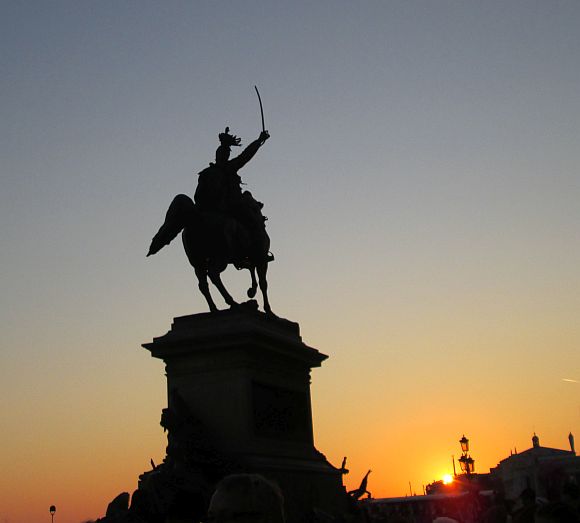
As anyone who has ever walked along the Riva degli Schiavoni knows, there is a honking big statue in the middle of the street.
Many (most? all?) countries can boast imposing effigies of men on horseback, usually brandishing a saber, or their hat, or maybe a banner. Brandishing, anyway.
Considering that, in the case of the mounted man on the Riva, nobody has seen fit to provide even the tiniest clue as to who he is, you’ve probably been satisfied to surmise that somewhere, at some time, this man did something bronzeworthy..
Then you take pictures of the more memorable lions, and move on.
But for anyone who would, in fact, like to know what’s up with all these characters, I am ready to reveal all. And my excuse is the date, June 2, which is a national holiday known as the Festa della Repubblica, or Republic Day. Although the man relates only inversely to the event (more on that below), I’m exploiting this occasion because there isn’t another one around that fits him any better.
The swordbearing cavalier is King Vittorio Emanuele II (also known as the “Father of the Fatherland”), and he was the first king of the newly created nation of Italy. Clicking on that link will spare us slowing down for a reprise of most of the details; the “juice” of the subject, as they put it here, is that in 1861 Italy pulled itself together to form one nation out of many assorted mini-nations, duchies, and kingdoms.
The pulling-together process was long, toilsome, and often extremely bloody. Then the newly-minted Italians, having established the Kingdom of Italy on March 17, 1861, had to find a ruler. The mantle fell on the aforementioned Vittorio Emanuele, a member of the House of Savoy (one of the oldest ruling families in Europe), who was already King of Sardinia and, more important, had been a major participant in the Unification process.
Some of the main events which led to this moment, with several Venetian codicils, are depicted in nearly insane detail on the monument, as follows:
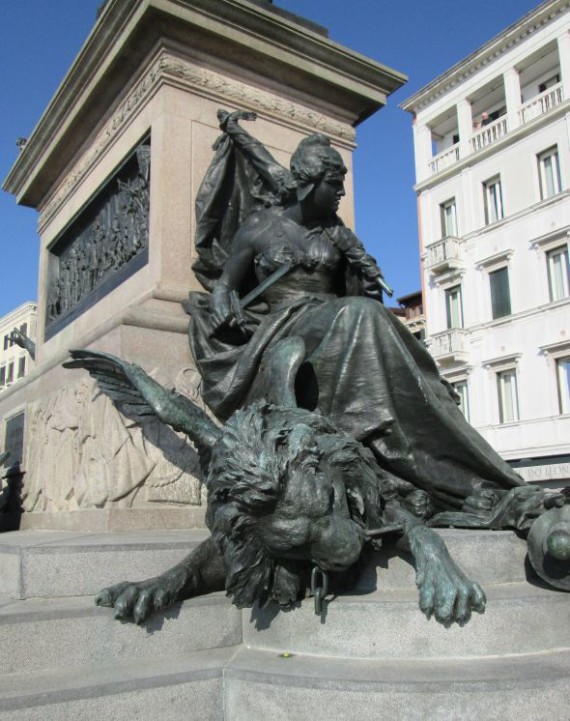
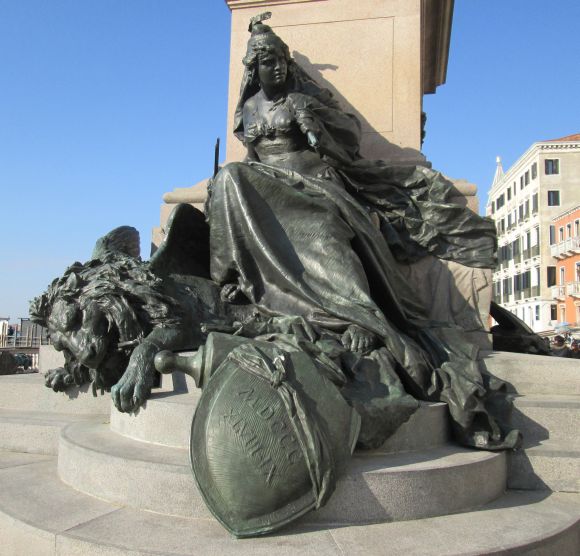
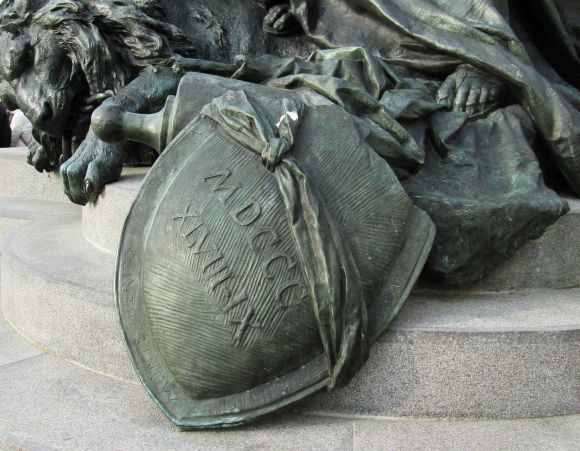
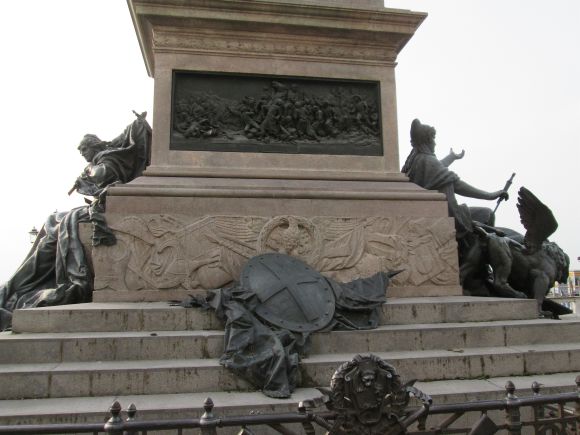
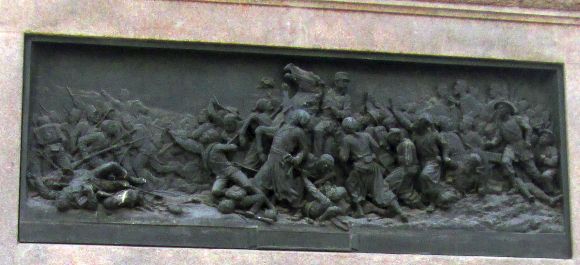

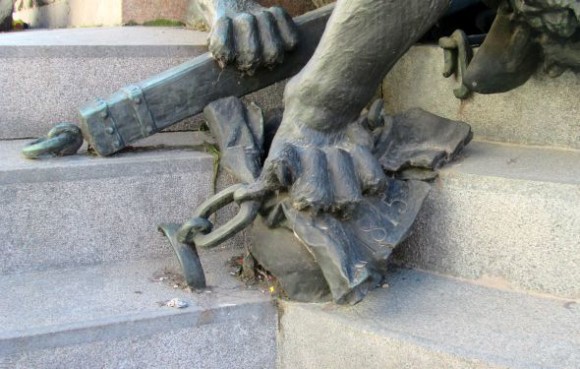
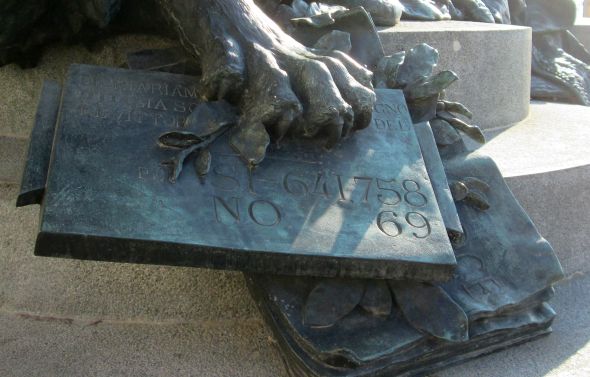

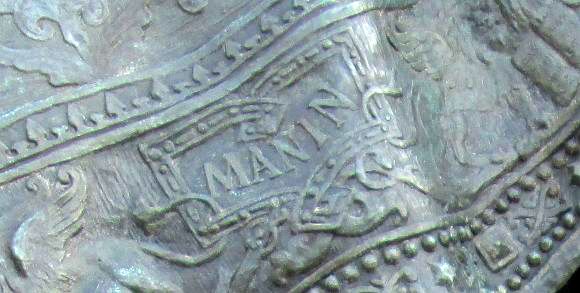
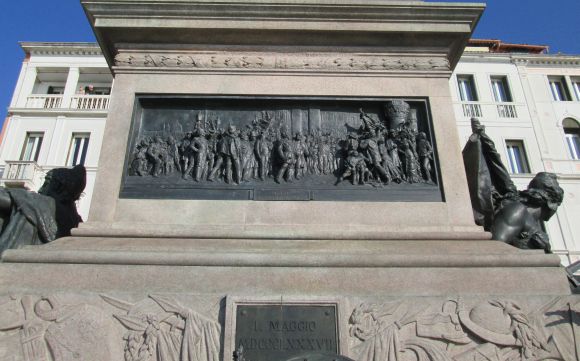
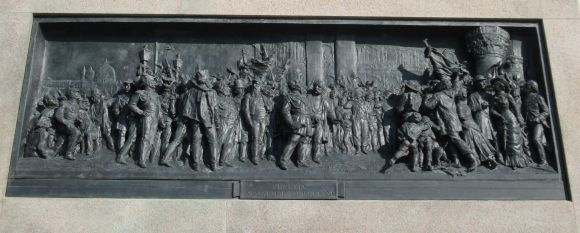


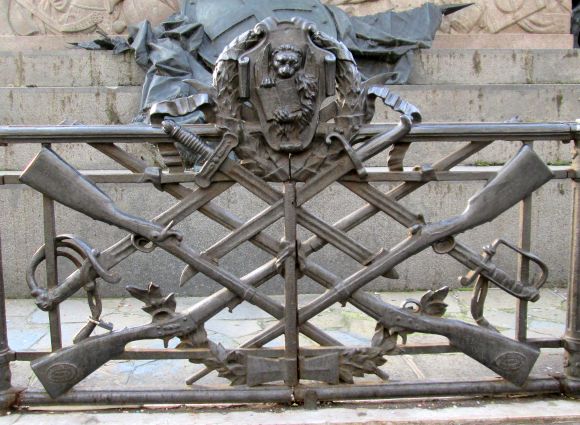
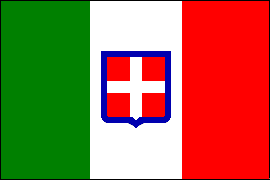
I mentioned above that I’m writing this on Republic Day, even though the king relates to it only inversely. I say that because after 85 years of kings, the Italian people went to the polls on June 2, 1946 and voted to replace him with a republic. That’s one impressive job-performance evaluation.
Furthermore, the king and his entire family were sent into exile, which demonstrates some prudence on the part of the new government, considering that 54 percent (almost all in the North) had voted for a republic but 45 per cent voted to keep the monarchy (almost all in the South). There are a few characters around Venice who still make a point of putting out the royal flag on certain occasions. It’s a vain gesture; the Italian Constitution forbids the reinstatement of a monarchy by constitutional amendment. The only way to bring back a king would be to write a completely new constitution. This is not on anybody’s to-do list.
In any case, if there were to be a new king, he couldn’t come from the House of Savoy, as the Savoyards formally renounced their claim to the (non-existent) throne in 2002 in return for being permitted to set foot in Italy again, should the mood strike.
But the statue remains, and even if nobody now recognizes who it is on the horse, it served a very important purpose in its time. Statues of Vittorio Emanuele II and his co-divinity, Giuseppe Garibaldi, began to appear in many places after Unification. The reason, as so aptly and famously put by contemporary statesman Massimo d’Azeglio, was “Now that Italy has been made, we need to make the Italians.”
You wake up one morning and you’re an Italian. What is that supposed to mean? Statues of the two major protagonists were one way of focusing public attention on the new reality and the new identity.
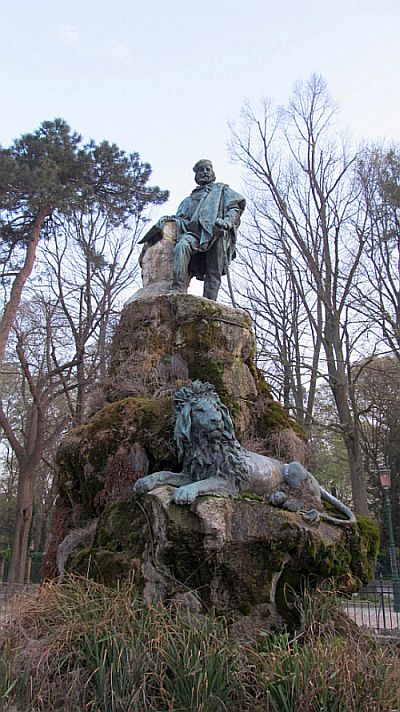
“To transmit the … sense of a common past and present identity … effectively, urban space became re-defined for the political realities of the late nineteenth century. Public commemorations became widespread, especially through the erection of monuments and plaques, and the re-naming of streets. Their inauguration ceremonies encouraged the collective participation in the spectacle of the ‘imagined’ nation. Personality cults which glorified national figures such as King Vittorio Emanuele II and Giuseppe Garibaldi were perceived as important tools in the nation-building process.” (Laura Parker, “Identity, memory, and la diarchia di bronzo, Commemorating Vittorio Emanuele II and Giuseppe Garibaldi in post-Risorgimento Venice.”)
I close with some trivia, which as everyone knows, I never consider trivial.

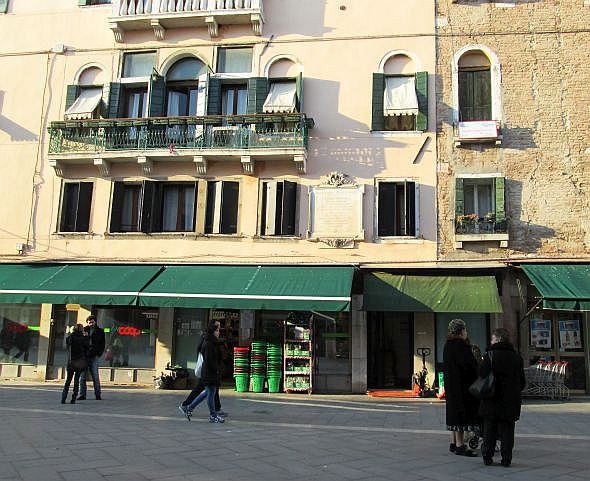
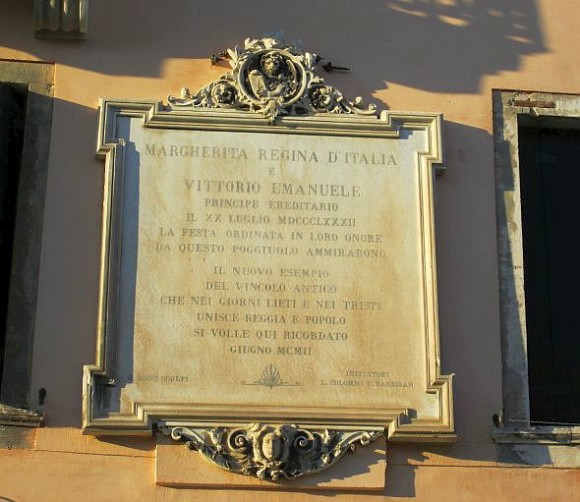
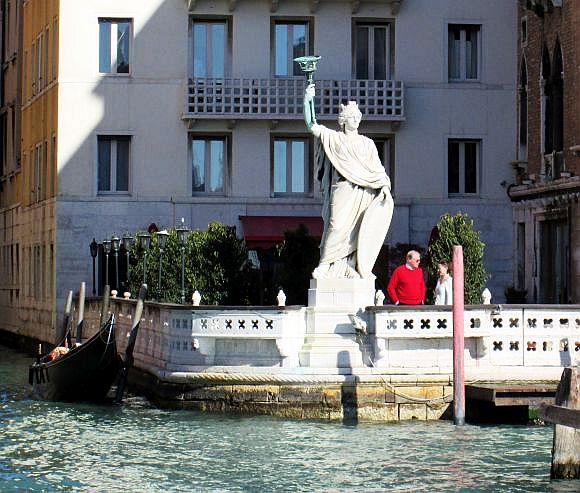
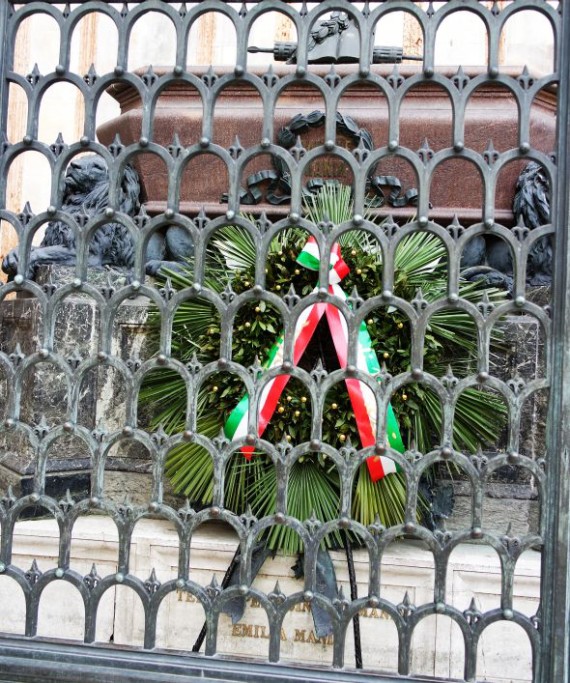
April 25, as I have reported on other occasions, is a double holiday in Venice: The anniversary of the liberation of Italy after World War II (this year marking the 70th milestone), and the feast day of San Marco, the city’s patron saint.
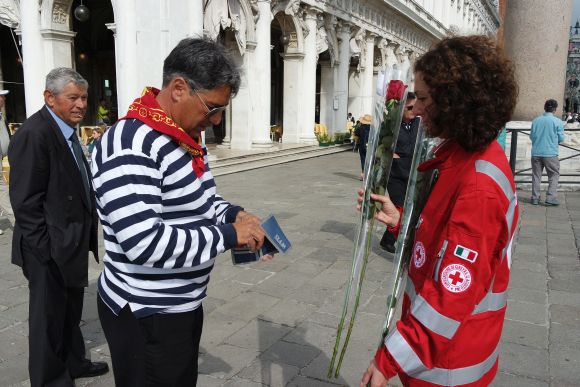
Either of those facts deserves reams, and reams are ready and waiting, thanks to phalanxes of historians.
I simply want to keep the world apprised — yes, I modestly claim to keep the WORLD apprised — of a date that deserves remembering. And here, it’s remembered twice.
First, the roses:
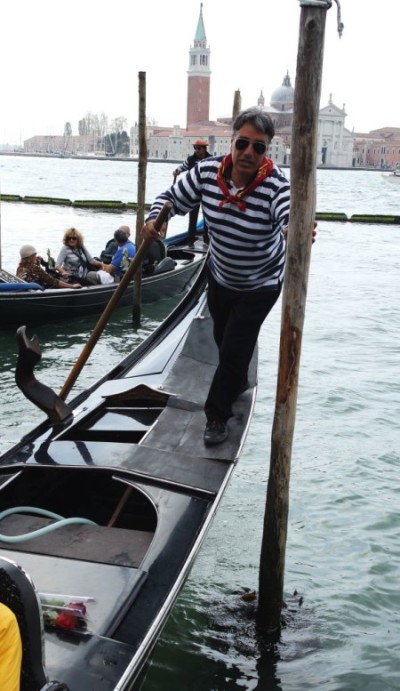
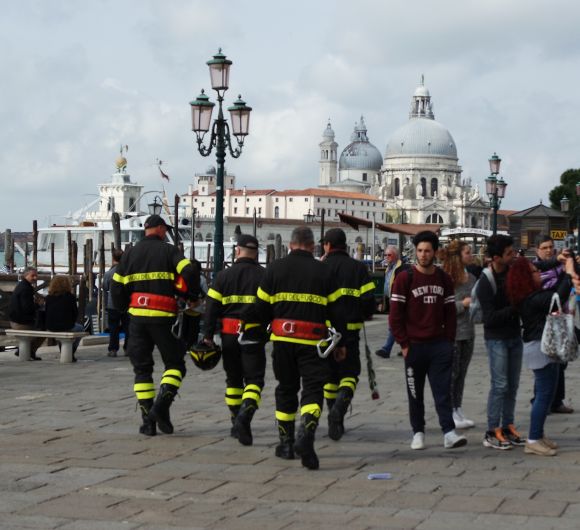
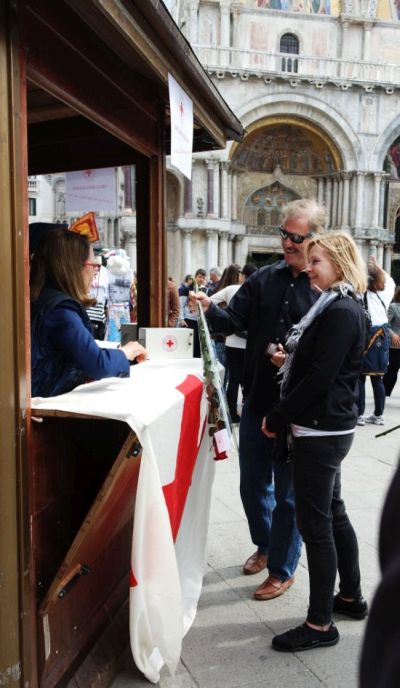
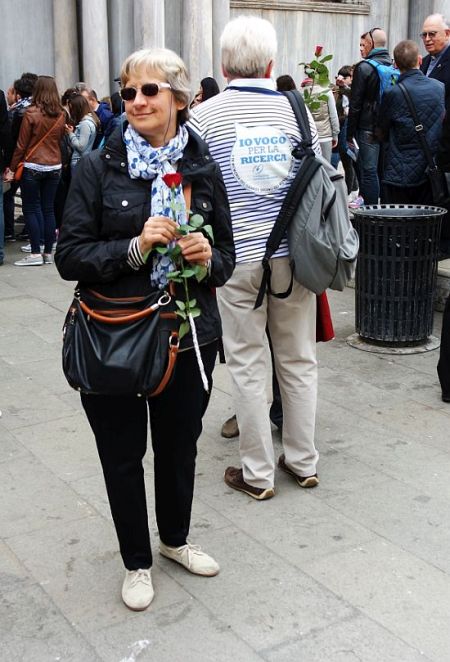
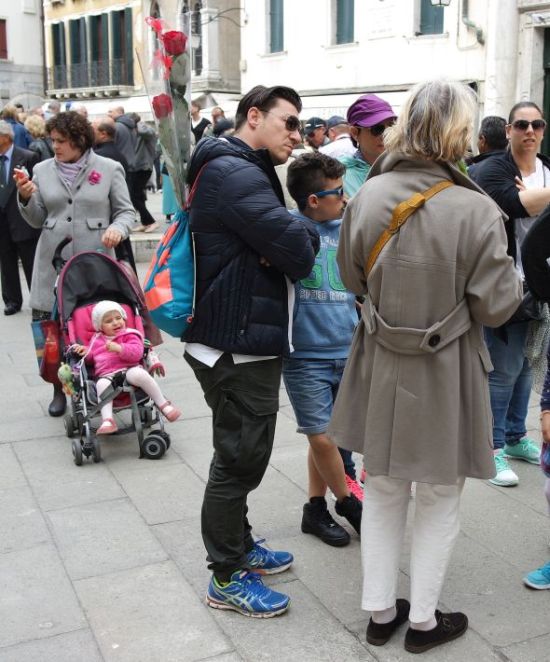
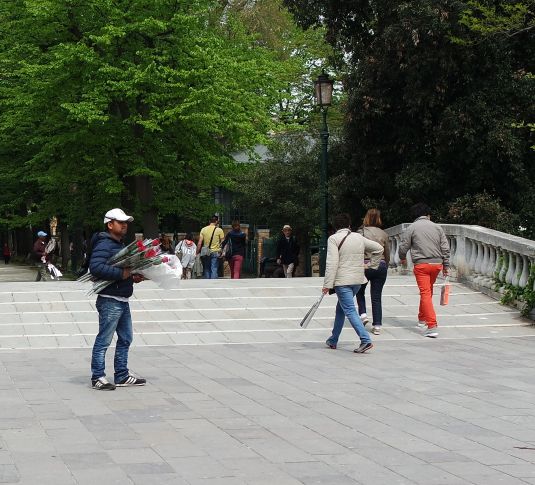
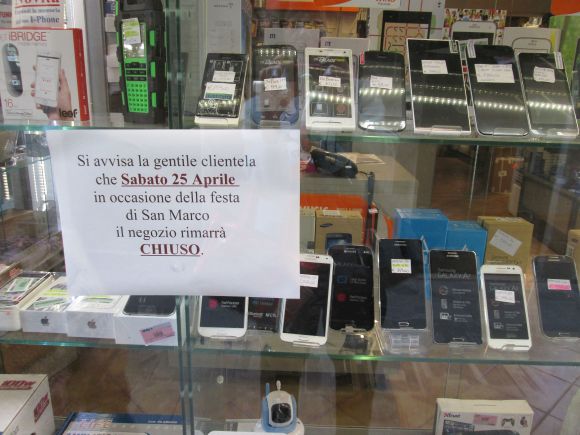
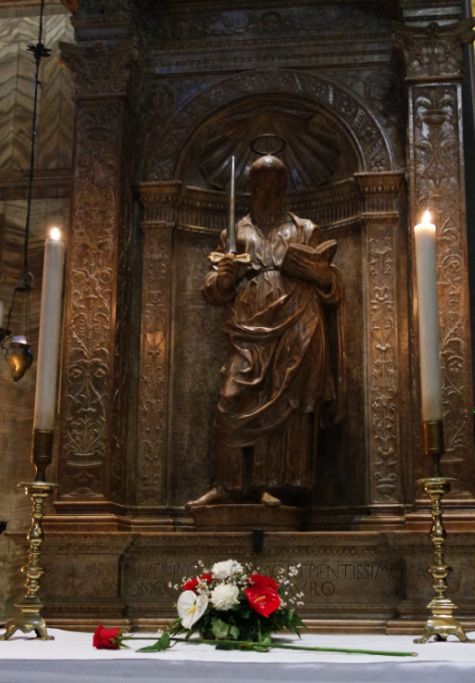
And second, the liberation itself, as seen in Venice.
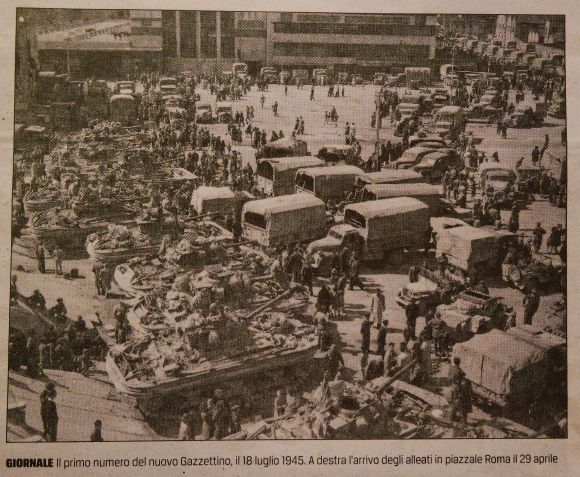
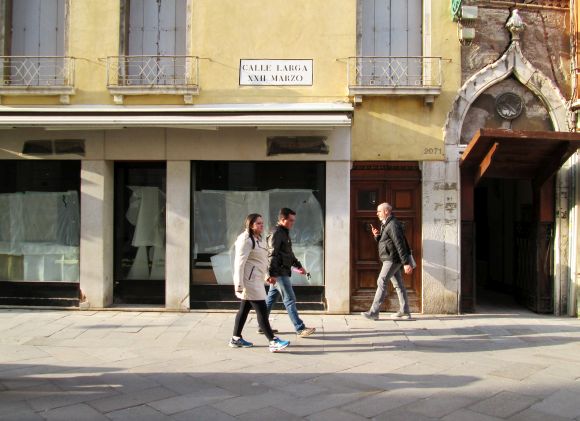
After the doges were let go in 1797 by the new management team of Napoleon and Satan, there was a very unhappy lull in Venetian history. It was an unhappy lull even while it was happening, before it became history.
And it wasn’t what I’d really call a lull, either, unless you call being put to bed with dengue fever a lull.
This interval of tyranny and anguish was abruptly cut short on March 22, 1848, when the Venetians revolted against Austria, which had acquired Venice from France in a diplomatic trade-off immortalized in the Treaty of Campo Formio (October 18, 1797). Cleverly, Napoleon effected this trade only after he had disemboweled the former Queen of the Seas, carrying off wagonloads of treasure and razing palaces, churches, convents and scuole (thereby making more treasure available for his waiting wagons).
 The man who led the uprising and the brief establishment of the Republic of San Marco was a Venetian lawyer named Daniele Manin. I’ve outlined the story in another post, so I won’t go over it again. I would just appreciate your pausing for a moment to consider the magnificence of this doomed attempt and the people who put everything into it.
The man who led the uprising and the brief establishment of the Republic of San Marco was a Venetian lawyer named Daniele Manin. I’ve outlined the story in another post, so I won’t go over it again. I would just appreciate your pausing for a moment to consider the magnificence of this doomed attempt and the people who put everything into it.
And just think: Only twelve years later, the Austrians were gone. I’m not capable of determining to what extent 1848 led to 1861, but I still want to give my own puny recognition of a huge event which everyone by now just takes for granted, I guess.
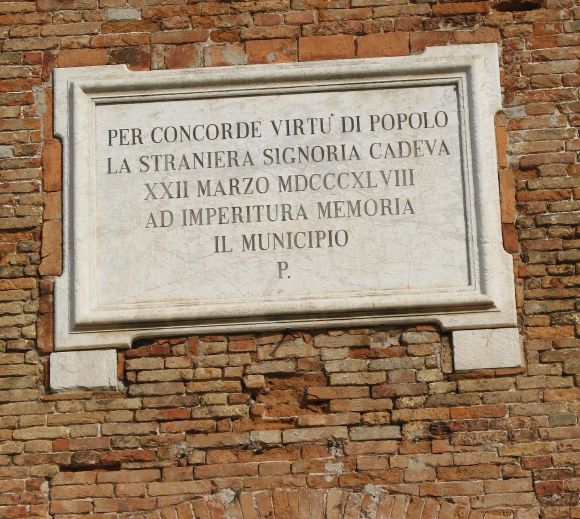
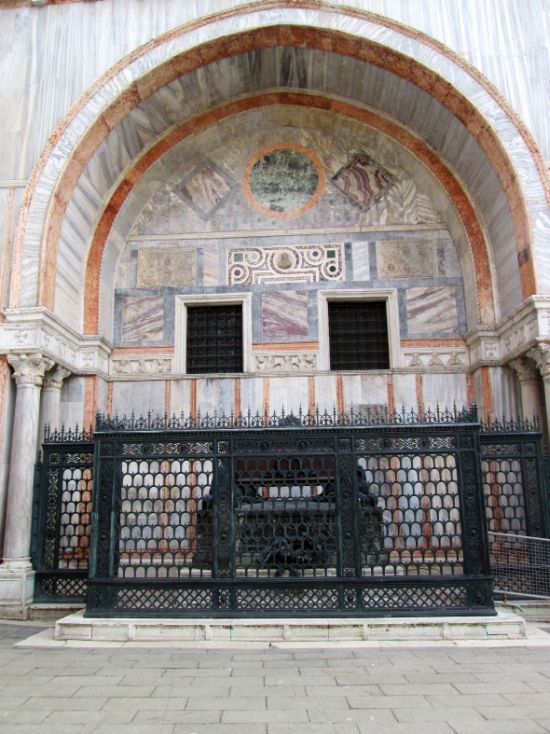
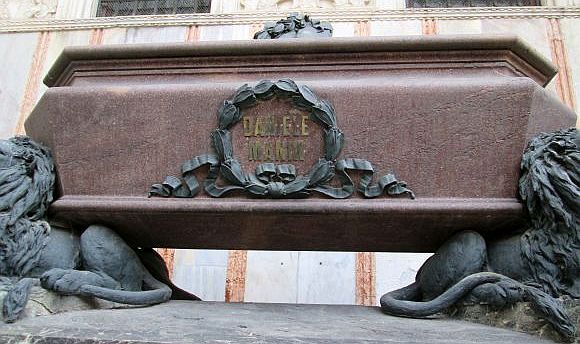

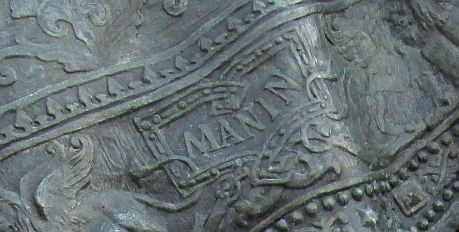
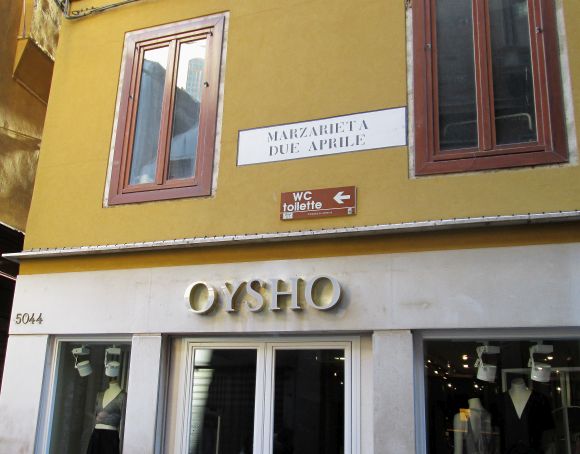
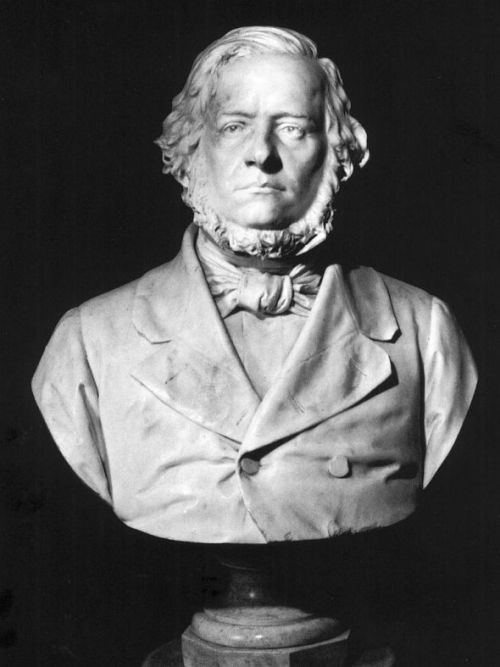
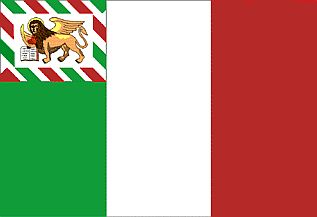
1848, if you’ll cast your minds back, was a year that produced a bumper crop of uprisings, insurrections, and assorted revolutions all across Europe. It was a brief, incandescent period variously known as the “Spring of Nations,” “Springtime of the Peoples,” or “The Year of Revolution.”
It happened in Venice, too.
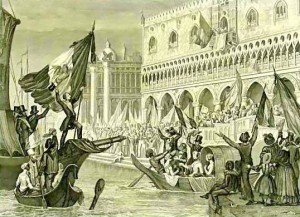
Venice, by then, had spent 51 years — two generations — under an Austrian army of occupation, except for a few scattered years when it was the French instead.
But on March 22, 1848, the independent Republic of San Marco was declared by a group of visionaries led by a Venetian named Daniele Manin (Mah-NEEN).
Historic Irony Alert: He was a relative, by adoption, of Ludovico Manin, the last doge of Venice.

I’ve often reflected on how odd it is that there should be more memorials to Daniele Manin around Venice than to any other individual (I’ve counted five so far), and yet it seems that he has become, like so many other heroes, just another distant star in the galaxy of indifference to which even the most passionate and brilliant people seem to be consigned. If anybody utters his name today (or any day), it’s probably because they’re referring to Campo Manin.
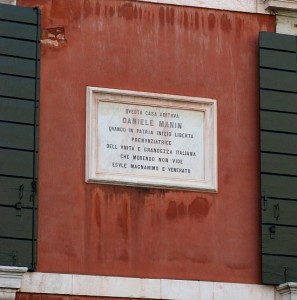
I’m offering this brief disquisition in order to enlarge your view of what history in Venice can entail. It wasn’t just doges and fireworks, it was also patriots and blasting artillery.
I suppose you could live in Venice if you didn’t care about history, though I don’t quite see what the point would be. But if you were to actually dislike history, you should probably move to Brasilia or Chandigarh. History is what Venice is made of, and history is made of people.
In addition to Campo Manin — which you can grasp is named for a person, even if you don’t know what he did — there is the more inscrutable street name of Calle Larga XXII Marzo: The Wide Street of the Twenty-Second of March.
On March 22, 1848, Venice rose up against the Austrian occupiers, and the flag of the independent Republic of San Marco was raised in the Piazza San Marco. It was war.
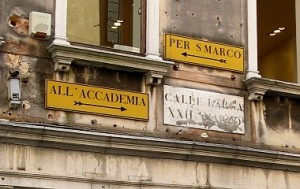
Not only did the Austrian army fire on the city with cannon placed on the railway bridge (which they had built two years earlier), it also made one of the first attempts at aerial bombardment. They sent hot-air balloons aloft loaded with incendiary bombs rigged with timers; the wind, happily, blew them back to where they came from.
The Venetians and their allies fought ferociously, but whereas once the fact of being surrounded by water had been a defensive advantage, now it became a fatal handicap. The Austrians clamped a siege around the city, reducing it to starvation, which was accompanied by an epidemic of cholera.
One of the best-known poems from this period is “Le Ultime Ore di Venezia” (The Final Hours of Venice), written in 1849 by Arnaldo Fusinato. He relates the desperate last days in the city, constructing an exchange between a passing gondolier and the poet in which they give a summary of the situation in which the former republic found itself. Each stanza concludes with the poignant refrain, “Il morbo infuria, il pan ci manca/Sul ponte sventola bandiera bianca” (Disease is raging, there is no more bread/on the bridge the white flag is waving).
It had to end.
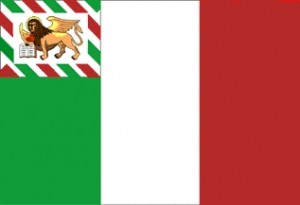
On August 22, 1849, Manin signed the treaty of surrender. The Austrians re-entered Venice, where they remained until 1861. Manin, like several of his ministers, went into exile. He died in Paris in 1857, at the age of 53.
His body returned to Venice on — yes — March 22, 1868, to a city which had finally been liberated from the Hapsburg domination and become part of the Kingdom of Italy. A solemn funeral ceremony was held for him in the Piazza San Marco, and he was placed in a tomb against the north wall of the basilica.
Lino has often told me the anecdote of the little old Venetian lady who was crossing the Piazza San Marco not long after the Austrians returned to the devastated city. A soldier walked by, and his sword was dragging — perhaps only slightly — across the paving stones.
She couldn’t take it. “Pick your sword up off the ground,” she commanded him. “Because Venice surrendered — she wasn’t taken.” Starving a city into submission is one of the least noble ways to conquer your enemy, but history shows that it does get the job done.
Final tally: Slightly more than a year of independence, almost all of which time was spent fighting.
When I reflect on much of this — I shouldn’t, but it’s more than I can resist — and observe the condition of the city’s successive administrations over the past 50 years or so, each of which seems to be a copy of its predecessor, except slightly worse, I can’t bring myself to imagine what Daniele Manin and his dreadnought compatriots might be thinking.
I suppose it’s a good thing after all that he has been “disappeared” into the deep space of cultural oblivion.
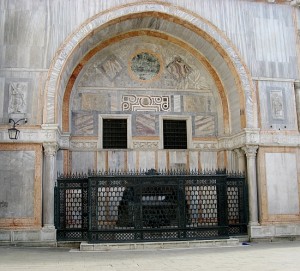
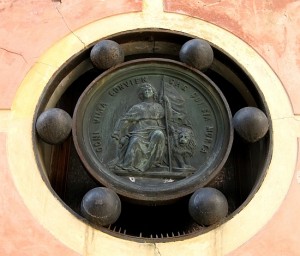
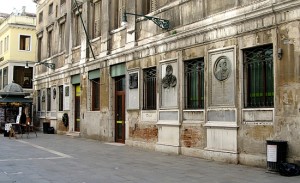
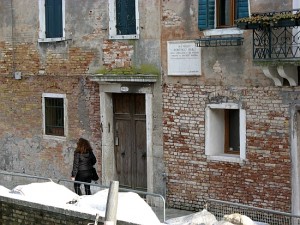
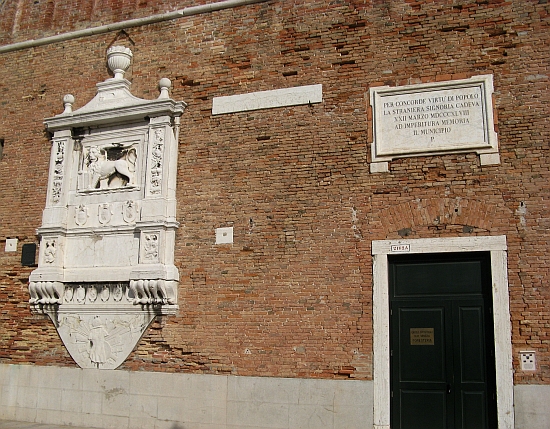

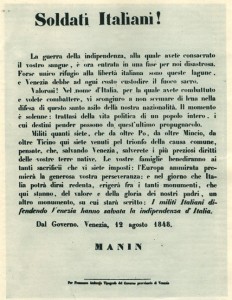 [Translation by me]: Italian Soldiers! The war of independence, to which you have consecrated your blood, has now entered a phase which for us is disastrous. Perhaps the only refuge of Italian liberty are these lagoons, and Venice must at any cost guard the sacred fire.
[Translation by me]: Italian Soldiers! The war of independence, to which you have consecrated your blood, has now entered a phase which for us is disastrous. Perhaps the only refuge of Italian liberty are these lagoons, and Venice must at any cost guard the sacred fire.
Valorous ones! In the name of Italy, for which you have fought, and want to fight, I implore you not to lessen your efforts in the defense of this sacred sanctuary of our nationality. The moment is a solemn one: It concerns the political life of an entire people, whose destiny could depend on this final bulwark.
As many as you may be, that from beyond the Po, beyond the Mincio, beyond the Ticino, have come here for the final triumph of our common cause, just think that by saving Venice, you will also save the most precious rights of our native land. Your families will bless the sacrifices which you have chosen to undergo; an admiring Europe will reward your generous perseverance; and the day that Italy will be able to proclaim itself redeemed, it will raise, among the many monuments which are here, of the valor and glory of our fathers, another monument, on which it will be written: The Italian soldiers defending Venice saved the independence of Italy.
The Government 12 August 1848 MANIN